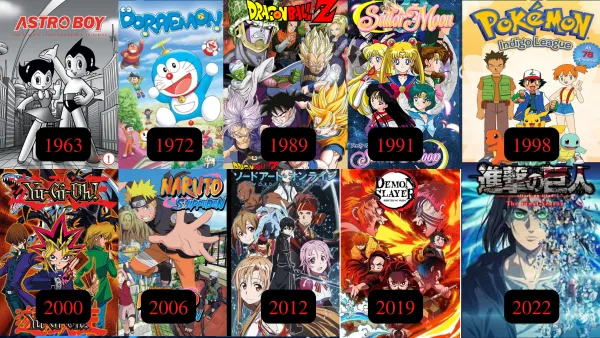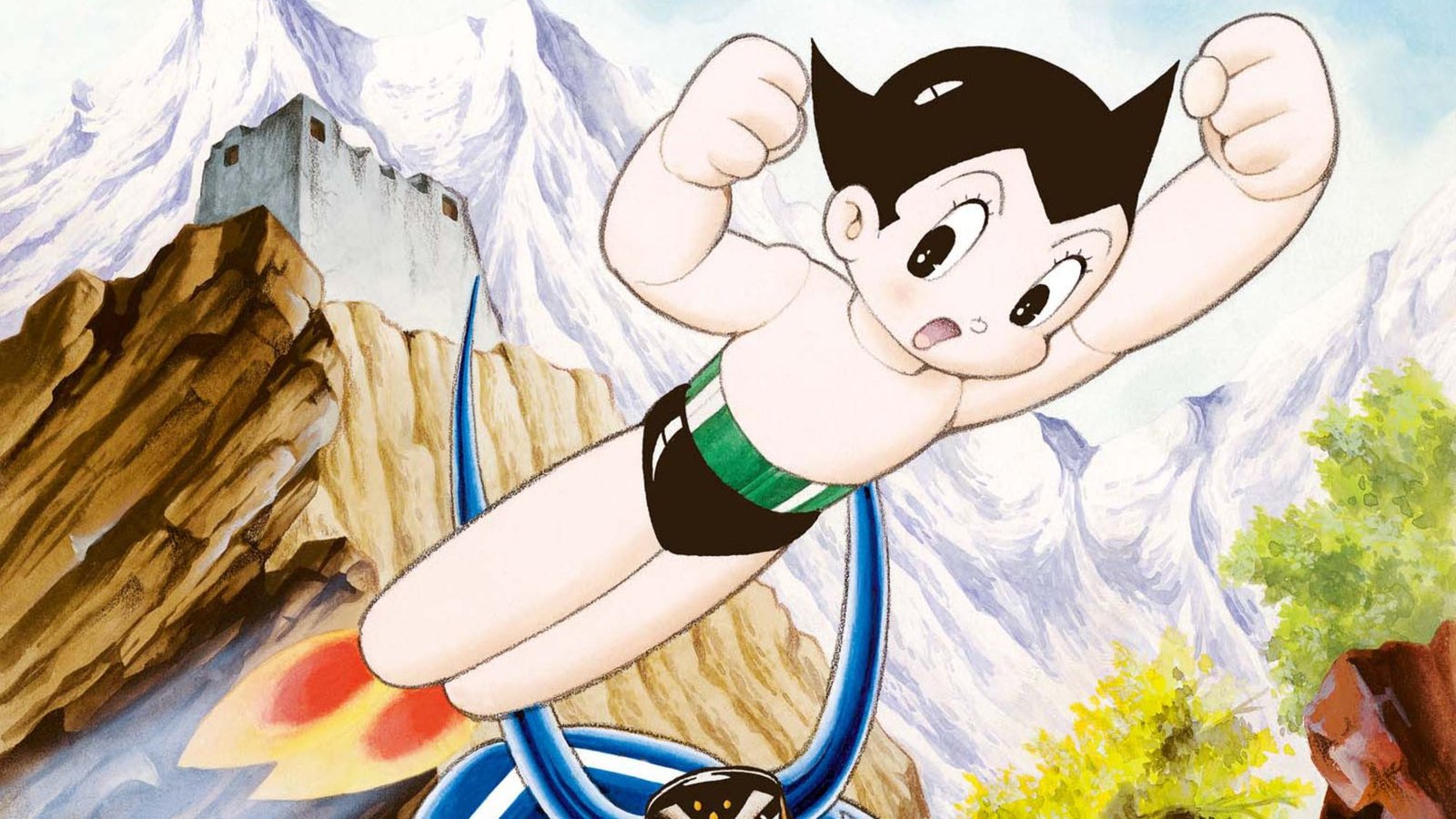The History of Anime: How Japanese Animation Conquered the World
Anime, the distinct style of Japanese animation, has become a global phenomenon, captivating audiences with its unique storytelling, diverse genres, and rich artistic styles. What began as a domestic cultural product has grown into an influential global industry, shaping entertainment and popular culture worldwide. This post delves into the history of anime, exploring its origins, evolution, and how it conquered the world.
1. The Birth of Anime: Early Beginnings in Japan
The roots of anime can be traced back to the early 20th century, with Japan’s first forays into animated films. The earliest examples of Japanese animation were short films influenced by Western animators, particularly those from the United States and Europe.
The First Japanese Animations:
The first known Japanese animated film, Namakura Gatana (The Dull Sword), was created in 1917 by Jun’ichi Kōuchi. This short, silent film depicted a humorous tale of a hapless samurai, showcasing the early development of Japan’s unique approach to animation.

Influences and Developments:
Throughout the 1920s and 1930s, Japanese animators began experimenting with different styles and techniques, heavily influenced by Western animators like Walt Disney. However, Japan’s isolation during World War II slowed the industry’s growth, as animation was primarily used for propaganda purposes.
2. Post-War Resurgence: The Golden Age of Anime
The end of World War II marked a turning point for Japanese animation. The industry experienced a resurgence, with increased demand for entertainment in the post-war period. This era laid the foundation for what would become the golden age of anime.
Osamu Tezuka and the Rise of TV Anime:
Osamu Tezuka, often referred to as the “God of Manga,” played a crucial role in the evolution of anime. His creation Astro Boy (Tetsuwan Atom) in 1963 became Japan’s first animated television series, setting the stage for the growth of anime as a popular medium. Tezuka’s work was characterized by innovative storytelling and a distinctive visual style that would influence generations of animators.
Anime Goes Global:
The success of Astro Boy was not limited to Japan. It became one of the first anime series to be exported internationally, particularly to the United States, where it gained a significant following. This marked the beginning of anime’s global journey, as more Japanese animated series and films found international audiences.
3. The Evolution of Anime: Diverse Genres and Artistic Innovation
As the anime industry matured, it diversified into various genres, appealing to a broad range of audiences. This period saw the development of iconic anime series and films that would leave a lasting impact on global pop culture.
The Emergence of Mecha and Space Opera:
The 1970s and 1980s were pivotal decades for anime, with the emergence of the mecha (giant robot) genre. Series like Mobile Suit Gundam (1979) and Macross (1982) became cultural phenomena, blending action with complex narratives about war, humanity, and technology. These series not only captivated Japanese audiences but also found dedicated fanbases overseas.
Studio Ghibli and the Art of Anime:
The 1980s also saw the rise of Studio Ghibli, founded by Hayao Miyazaki and Isao Takahata. Studio Ghibli’s films, including My Neighbor Totoro (1988) and Spirited Away (2001), are celebrated for their stunning animation, deep emotional resonance, and environmental themes. Spirited Away became the first anime film to win an Academy Award, further cementing anime’s place in global cinema.
Cyberpunk and Dystopian Visions:
The late 1980s and 1990s introduced darker, more mature themes to anime, exemplified by films like Akira (1988) and Ghost in the Shell (1995). These works explored cyberpunk aesthetics and philosophical questions about identity, consciousness, and the impact of technology. Their influence extended beyond anime, inspiring Western filmmakers and contributing to the genre’s global appeal.
4. The Global Boom: Anime in the 21st Century
The 21st century has seen anime explode in popularity worldwide, thanks to the internet, streaming platforms, and dedicated fan communities. Anime is no longer a niche interest but a mainstream cultural force.
Streaming and Global Distribution:
With the advent of streaming services like Netflix, Crunchyroll, and Funimation, anime has become more accessible to international audiences than ever before. Popular series like Naruto, Attack on Titan, and Demon Slayer have garnered massive global fanbases, and new anime releases are eagerly anticipated by viewers worldwide.
Cultural Impact and Influence:
Anime’s influence on global pop culture is undeniable. It has inspired countless artists, filmmakers, and writers, while also contributing to the popularity of Japanese culture, including fashion, music, and video games. The anime aesthetic has permeated everything from advertising to fashion, making it a defining element of contemporary visual culture.
Anime Conventions and Fandom:
Anime conventions, such as Anime Expo in Los Angeles and Comiket in Tokyo, draw thousands of fans from around the world. These events celebrate all aspects of anime culture, from cosplay to fan art, and provide a space for the global anime community to come together.
5. The Future of Anime: Challenges and Opportunities
As anime continues to grow in popularity, the industry faces both challenges and opportunities. Issues such as labor conditions for animators, the need for diversity in storytelling, and the impact of globalization on the anime industry are important considerations for its future.
Innovation and Creativity:
The future of anime lies in its ability to innovate while staying true to its roots. As new technologies like virtual reality and augmented reality become more integrated into entertainment, anime will likely explore new ways of storytelling, creating immersive experiences for viewers.
Global Collaboration:
With anime’s international success, there is potential for more cross-cultural collaborations, blending Japanese animation techniques with global storytelling traditions. This could lead to even more diverse and compelling narratives that resonate with audiences worldwide.
Conclusion
From its humble beginnings in early 20th-century Japan to its current status as a global cultural powerhouse, anime has come a long way. Its unique blend of artistic innovation, diverse genres, and compelling storytelling has captured the hearts of audiences around the world. As anime continues to evolve, its influence on global culture will only grow, cementing its place as a vital and enduring art form.
The history of anime is a testament to the power of creativity and the universal appeal of stories that transcend cultural boundaries. Whether through the imaginative worlds of Studio Ghibli, the epic battles of shonen series, or the philosophical musings of cyberpunk classics, anime has left an indelible mark on the world—and it shows no signs of slowing down.
4o



